Wednesday, November 24. 2010
Via GOOD
-----
by Patrick James
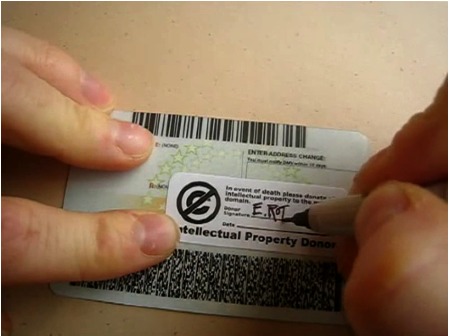
Evan Roth proposes that we become Intellectual Property Donors:
Why let all of your ideas die with you? Current Copyright law prevents anyone from building upon your creativity for 70 years after your death. Live on in collaboration with others. Make an intellectual property donation. By donating your IP into the public domain you will "promote the progress of science and useful arts" (U.S. Constitution). Ensure that your creativity will live on after you are gone, make a donation today.
We're happy to share our salvageable organs with those who need them, so why not our ideas?
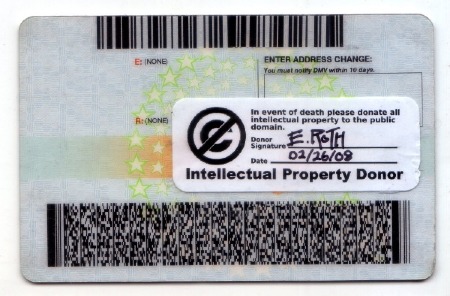
You can download and print your own labels here.
Monday, November 15. 2010
Via Lift — Nicolas Nova
---
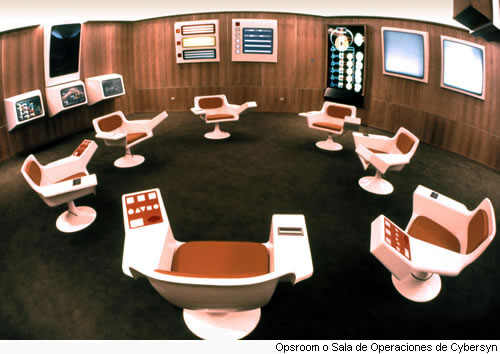
“Project Cybersyn was a Chilean attempt at real-time computer-controlled planned economy in the years 1970–1973 (during the government of president Salvador Allende). It was essentially a network of telex machines that linked factories with a single computer centre in Santiago, which controlled them using principles of cybernetics.
(…)
Project Cybersyn was a Chilean attempt at real-time computer-controlled planned economy in the years 1970–1973 (during the government of president Salvador Allende). It was essentially a network of telex machines that linked factories with a single computer centre in Santiago, which controlled them using principles of cybernetics. The principal architect of the system was British operations research scientist Stafford Beer.“
Country computing: a real-time feedback loop
Interestingly, Cybersyn design has been heavily influenced by the architect of this system, Stafford Beer, a cyberneticist specialized in feedback loops of management in corporations. The idea was basically to design a system for capturing, processing and presenting economic information to be managed in real time. A sort of feedback loop with the population, based on various organizations models better described here or in this lecture called “Fanfare for Effective Freedom: Cybernetic Praxis in Government” [PDF]. Some examples below of the underlying model of Cybersyn:
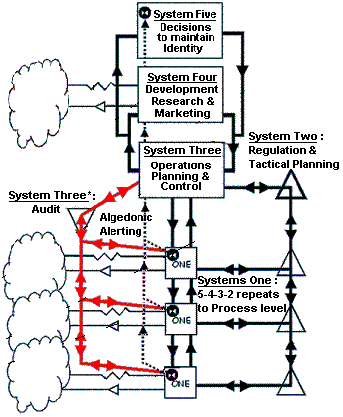
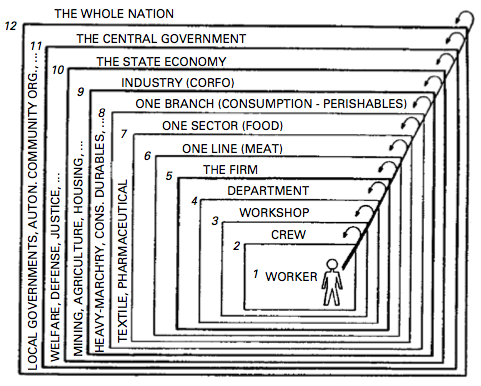
The idea was to have so-called “algedonic meters” in people’s home, i.e. warning public opinion meters that would be able to transmit Chilean citizens’s pleasures/displeasures to the government or television studio in real time. The government would then be able to respond rapidly to public demands based on these information, (”rather than repress opposing views” as proposed by Stafford Beer).
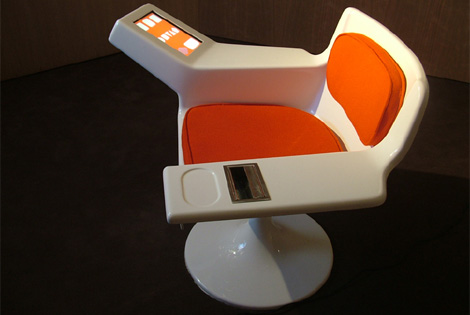
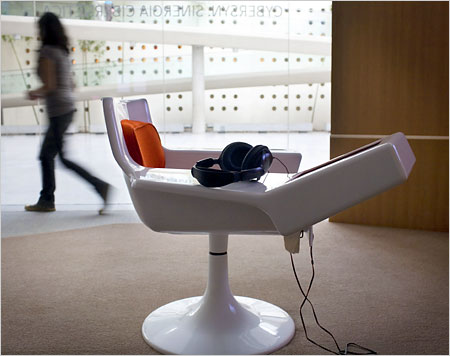 
User Interface design
Also, the interface design has been carried out by the Gui Bonsiepe a German designer working in Chile at the time of the project. Eden Medina, a researcher at Indiana University in the US is currently writing a book about this project (see here). Some quotes from here found there that I’ve found intriguing:
“I think the image of the operations room looks like something out of ‘Star Trek’or 2001. Whenever I show that image, people are stunned. Most people wouldn’t associate that futuristic image with the Allende period in Chile.
(…)
the flat panel projection screens used a series of slide projectors located behind the wall that were attached to the armrests of the chairs. When you pushed a button on the armrest, it would change the slide on the screen. Each of these slide images was hand-drawn by some of Chile’s top graphic designers. It looked like something that was real-time and highly automated — but you have to remember, this was the 1970s.“
Via Pasta & Vinegar
-----
by Nicolas Nova
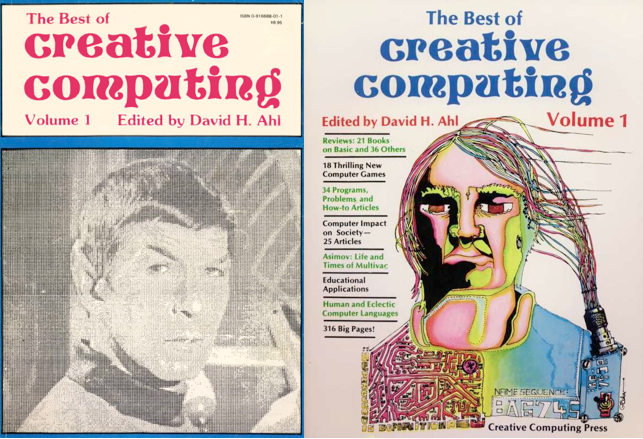
Recently ran across this curious magazine called “Creative Computing“, one of the earliest covering the microcomputer revolution (published from 1974 until December 1985). Readers interested in this can have a look at the some articles.
With titles such as “Is breaking into a time-sharing system a crime?”, “Why Supermarkets Are Going Bananas Over Computers”, “Videodiscs - The Ultimate Computer Input Device?” or “How Much Privacy Should You Have?”, the magazine is definitely an intriguing read today. The topic addressed there ranged from artificial (and “extra-terrestrial”) intelligence, computers in education, languages and programming theories, BASIC scripts, upcoming technologies, games and fictions (with “art and poetry”).
For people interested in current “trends” such as DYI or privacy, there is plenty to explore in order to understand some underlying roots. See for instance “amateur computing” or How One Computer Manufacturer Looks at the Data Privacy/Security Issue
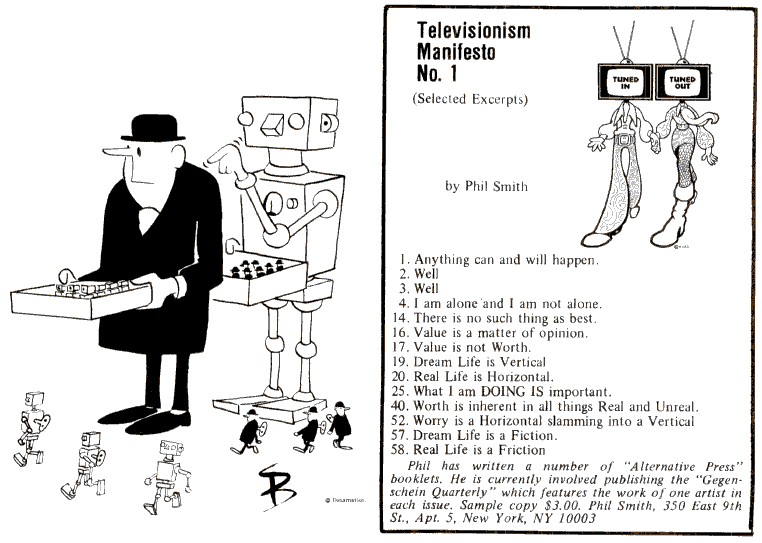
Why do I blog this? sunday afternoon hops on the internets always lead to curious material. Possibly useful to show students some examples of computer culture history.
Personal comment:
While we mention this old mag, don't forget to visit also Radical Software, which is A must see for media art / computer art history from the late 60ies - early 70ies (with papers by or about Buckminster Füller, about Norbert Wiener and Cybernetics, about Mc Luhan --of course...--, from Nam June Paik and other video art pioneers, with drawings by Ant Farm, statements about "media ecologies", etc.). And of course, don't forget the Whole Earth Catalog from the same period.
Wednesday, November 03. 2010
Via art agenda
-----

Time/Bank and e-flux are pleased to announce the grand opening of the Time/Store at 41 Essex Street, New York City.
Opening reception: Saturday, November 6th, 6-8 PM.
Store Hours: Tuesday – Saturday, 12-6 PM.
Time/Store on Essex Street follows the historic Cincinnati Time Store, opened by the American anarchist Josiah Warren in 1827 as a three-year experiment in alternative economics. Warren's idea was to develop an exchange system where the value assigned to commodities would come as close as possible to the amount of human labor necessary to produce them. For example: 8 hours of a carpenter’s labor could be exchanged for eight to twelve pounds of corn. This system eventually led to the creation of time currency, and to contemporary time banking—an international movement of alternative economics.
Time/Store on Essex Street is an extension of Time/Bank—a platform where groups and individuals in the art community can trade time and skills, bypassing money as the measure of value. Every Time/Bank transaction allows individuals to request, offer, and pay for services in "Hour Notes." When a task is performed, the credit hours earned may be saved and used at a later date, given to another person, or contributed towards developing larger communal projects. For example, if you happen to be in Beijing or Hamburg and need someone to help you shop for materials or translate a press release, you can draw on resources from Time/Bank and get things done without cash changing hands.
Time/Store will offer a wide selection of commodities—from books to food, art, electronics, tools, clothing, and much, much more—all of which will be available for purchase with your time or time currency: Hour Notes, the official currency of Time Bank. Hour Notes can be obtained by opening an account at the Time/Bank and earning hour credits by helping others. The Hour Notes are designed by Lawrence Weiner, and come in numbered denominations of half-hour, one hour, six, twelve and twenty-four hour bills.
Time/Store will also purchase commodities that you may want to trade for time. Every Saturday, from 2-6PM, we will review and selectively acquire some useful items you may want to sell for Hour Notes, which could then be used by you to purchase other items, or to get some help or service from members of the Time/Bank.
Time/Store is hiring: We are looking for several store clerks. Will pay in Hour Notes. Interested? Please write to us at timebank@e-flux.com
Time/Bank is initiated by artists Julieta Aranda and Anton Vidokle.
For more information and to open an account, please visit www.e-flux.com/timebank
Personal comment:
This is a strange coincident event whith an exhibition by french artists Christophe Berdaguer & Marie Péjus that takes its inspiration in the same subjet (Time Store project by anarchist Josiah Warren), here in Lausanne at the gallery Circuit. A way to say that it's worth to visit it!
Via GOOD
-----
by Patrick James
Dead drop letter boxes refer to secret locations sometimes used by spies to exchange items or letters without requiring them to meet or use official postal services. As part of his ongoing residency with EYEBEAM in New York City, the artist Aram Bartholl has updated the concept for the modern age. His Dead Drops project involves placing USB flash drives around the city; fastening them to walls, curbs, and buildings; and inviting strangers to plug-in their laptops and share their favorite files or data.
The end result, as Bartholl explains, will be an "anonymous, offline, peer to peer file-sharing network in public space." It will eventually include a documentary film about the process and files shared, as well as a map and a "how to make your own dead drop" manual. And, ultimately, it will serves as an object lesson in what happens when strangers share information in public.
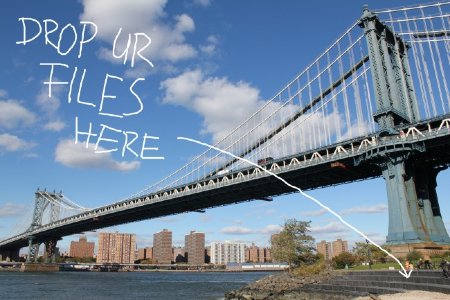
All New York City locations are listed here.
Via Buzzfeed
|





![]()







